“It’s a recession when your neighbor loses his job.
It’s a depression when you lose yours.”
(Harry Truman)
Following is a continuation of our originally produced 5-Part series on inflation. For your convenience, if you would like to reference the previous reports you may click the links below or search for them among many other interesting articles in our blog at mgfs.net/category/blog/
Inflation Report — Introduction
Inflation Report 1—What is Inflation
Inflation Report 2—What can you do to protect yourself?
Inflation Report 3—What is the government’s role with inflation?
Inflation Report – Part 4
History can be a guide to help us manage expectations and emotions about inflation. We have been through numerous rough patches and have always recovered.
To understand inflation historically, it is important to recognize the structures of different markets. The markets follow secular and cyclical patterns. Secular markets are extended and last for long periods of time. While cyclical markets are shorter-term. Both market types can be bullish, experiencing rising prices, or bearish, experiencing declining prices. Some of these market cycles can be quite dramatic and breathtakingly, good, or bad. While secular bull or bear markets are indeterminate in length, economists and analysts have different benchmarks to define these environments, when they occur, or where we are in each cycle. Ed Easterling, founder of Crestmont Research, for instance, will define the beginning and end of secular markets through interest rates, market valuation, and inflation levels. Cyclical markets, however, are episodic periods of ups and downs often based on economic indicators, earnings reports, headline news, high frequency trading algorithms, global data, and Fed related actions. Understanding secular and cyclical markets historically help us to consider today’s economic environment and where we may go from here.
Recessions and depressions are negative parts of market cycles. The standard definition of a recession is a decline in GDP (economic productivity) for two or more consecutive quarters. According to the National Bureau of Economic Research, in addition to negative GDP readings, a recession includes high unemployment, wage declines, and a slowdown of goods produced and sold. A depression is a more severe recession. GDP declines by more than 10% and is sustained for a longer timeframe. They are rare.
Looking Back
The Forgotten vs Great Depression
While historians and economists reflect on the Great Depression of 1929, they usually neglect to mention the crash of 1921, which corrected itself. The forgotten depression of 1921 began after World War I and the Spanish Flu of 1917. There was a post-war boom created by credit expansion, the money supply increased until eventually the boom economy turned into a bust economy. The depression, which was severe, lasted for 18 months and then ended. The US government mainly ignored it, used a default ‘laissez-faire’ approach, and it went away on its own. The Fed, established in 1913, still in its infancy, had little involvement. In essence, the economy cured itself. What followed was a strong economy that rebounded into the “Roaring 20’s.”
The series of events that set the tone for the Great Depression which started in 1929 was also the expansion and contraction of money and credit, just like the post WWI depression. This time, however, the Hoover and Roosevelt administrations were very aggressive in attempting to combat the Great Depression with a series of bold policies that only deepened the depression. There were a series of setbacks, recoveries, and recessions that continued until America’s entry into WWII in 1941, after the attack on Pearl Harbor. The economy then experienced a secular bull market lasting through the mid-1960s with steady growth and a relatively stable dollar.
Stagflation in the 1970’s
The secular period after the depression is often thought to have experienced a recovery and boom due to the manufacturing revolution that came from WWII. It was a time of prosperity and growth. Ultimately, the 1970s was the end of this cycle, with very high inflation and low economic growth. Ironically, the productivity required to sustain the Vietnam War did not trigger prosperity. It was another straw on the camel’s back. Additionally, the rise of OPEC, new social programs such as Medicare, and President Johnson’s war on poverty, called the Great Society, added to government spending. The Fed kept interest rates too low for too long and then printed money which pumped excess liquidity into the economy. This resulted in a very long secular bear market, high unemployment, and a series of recessions. Between 1969 and 1982 the United States experienced four recessions, with an average length of 12 months. The average inflation rate during this era was around 13%, with unemployment also hovering near 13%.
Each recession reappeared like a loop. Government would apply an accommodative monetary policy, the economy would grow, the Fed would tighten and raise interest rates, and then the economy would experience a recession. What finally broke the loop? Federal Reserve Chairman Paul Volker raised interest rates to approximately 20% in 1979 and a few years later President Reagan’s administration reduced taxes and cut regulations. While these changes were painful for the economy in the short-term, they shortened the time period to basically detox and jump start the economy into a secular boom era that primarily lasted until the year 2000. To note, the regime change was marked by an era of innovation with information technology and the advent of the internet.
The Great Recession
The new century started with a recession between 2000-2002, included 9-11, the dot.com crash, a series of corporate scandals, and more. The Fed lowered interest rates, mortgage loans were underwritten with minimal requirements, and the economy soared for several years. Risk taking became excessive with derivatives, and loosely underwritten, packaged credit solutions traded on the secondary market, where the weak underlying loans were never to be reconciled. The Fed proceeded to tighten monetary policy with corrective intentions. However, this was a tipping point for a huge housing bubble and liquidity crisis, a house of cards that started to fall in late 2007 and crashed in September 2008. The Great Recession lasted until March 2009. Thereafter, the Fed, once again, eased monetary policy and infused liquidity into the economy with over a decade long program referred to as quantitative easing. The greatest accumulation of wealth in the history of the market transpired over the next 13 years.
Covid-19
The stock market boomed as the Fed continued variations of quantitative easing. The economy was firing on all cylinders while the market was becoming “overvalued”. Then the Covid-19 Pandemic broke out and the world economy went into lockdown mode. Many non-essential businesses were forced to close indefinitely and permanently. Aside from the health perspective, this became a life altering event for many. With the lockdown, the government paid people not to work and many businesses not to produce, and the global supply chain was impacted immediately. The world went into a deep recession overnight.
As businesses re-opened, the economy began to recover. However, the damage was done. Supply chains, 2 years later as of this writing are still devastated with ports and logistics struggling to return to normal. The Fed increased the money supply by about 40% during this period. In essence, the government was both borrowing and printing money to compensate people, industries, non-profits, and businesses for less production and services, helping many. This inflation coupled with quantitative easing since 2009, plagued the economy with inflation levels not seen since the 1970s. To this point, the Fed has been committed to active involvement, consistent with its mandate. Many argue they were easy for too long and corrective too late. Today we are in the midst of a harrowing balancing act.
What We Can Learn
Mark Twain was once quoted as saying that while history doesn’t repeat itself, it does rhyme. There are many things to remember from stressed economic environments over the last century. One key observation is that the Fed has had its fingerprints on almost every recession and the Great Depression. Another saying that is relevant is that you should not fight the Fed. They are going to execute as they feel necessary to bring pricing stability to the market and maintain low unemployment. As advisers, we pay very close attention to Fed activity. Below are helpful considerations:
- When the Fed tightens monetary policy too abruptly, this can inadvertently lead the economy into a recession.
- When the Fed does too little, implements tightening too late, or if member banks continue to lend, thereby saturating the money supply, the risks associated with inflation increase.
- When the Fed follows an accommodative or loose monetary policy, business can grow with greater access to capital and markets often outperform. This directly causes inflation.
- Indirectly, fiscal policy impacts inflation as well. Government implements economic policies that motivate the private sector to invest, hire, innovate, spend, and grow. Fiscal policy, like monetary policy, can be a double-edged sword.
- When prices are stable with low inflation, the markets are generally calmer. Going from an environment that is easy to access capital with low interest rates, therefore inflationary, to an environment that controls and reduces inflation with less access to capital and higher rates is necessary and challenging. Metaphorically, access to easy money is like an addiction. When money is less easy to access, it is likely to cause withdrawal pains. In order to heal (overcome the addiction and its affects) it is painful in the short run but necessary to return to a sustainable and healthy state in the long run.
The point of these lessons may be best understood by accepting the notion of Newton’s Third Law of Motion which states that for every action there is an equal and opposite reaction. Whether recessionary or growth periods, monetary and fiscal policies seek to reform the economic environment and ultimately result in the opposite outcome over time. This appears to be our modern economic cycle. The Fed and government leadership must pay attention to history.
As it relates to you, when you properly plan, your response to the economy, whether a recession or a depression, will be different than your neighbor’s. You may be able to endure through the costs of higher inflation while others may not.
In business, there are always companies that perform well. During Covid, Amazon shipped goods to your front door, and they were clear winners. Today, energy companies that have languished for the last decade and oil companies are performing with great strength. Consumers, businesses, and overall industry will adapt and always have needs. Companies will always seek to innovate and be profitable. New ideas and innovation that replace old ways can be referred to as creative destruction, a concept named by an Austrian economist in 1942. This is the wildcard that can have an enormously positive impact on the economy and the markets going forward.
Regarding successful investing, there are tried and true approaches. Markets move as quickly to the upside as they do to the downside. If you cash out, you lock in your losses. It is best when investing to remain in the market rather than to time anticipated volatility. During the Great Recession the Stock market declined by almost 50% and bottomed out on March 9th, 2009. It then began a massive market rally of 401%, not without its moments, that continued until February 19th, 2020. As you are aware, the markets collapsed at the onset of Covid-19, the S&P 500 dropped 34% and then quickly recovered to continue its growth path through 2021. Another very well-known fact: If you miss out on the top 10 trading days, historically you missed out on 50% of your performance potential.
It would not be lost on the authors of this report if you perceived the fiscal policy of laissez-faire to overcome the 1921 Depression as successful. Right or wrong, it is very unlikely that stressed economic environments will ever be left to work themselves out again given immediate, widespread media coverage and intense political pressures. In contrast, the Fed has only become increasingly engaged in the ensuing depression and recessions. Is this due to greater economic complexity or is this the cost of their involvement? Each recession and depression have been handled by the government differently. The economy continues to evolve and is ultimately in uncharted territory. We can only hope the Fed and presiding governments learn from their past mistakes and make responsible and correct decisions going forward.
Next up – Inflation Report 5 – How Do We Live with It?
All our best,
Your Partners from MGFS




